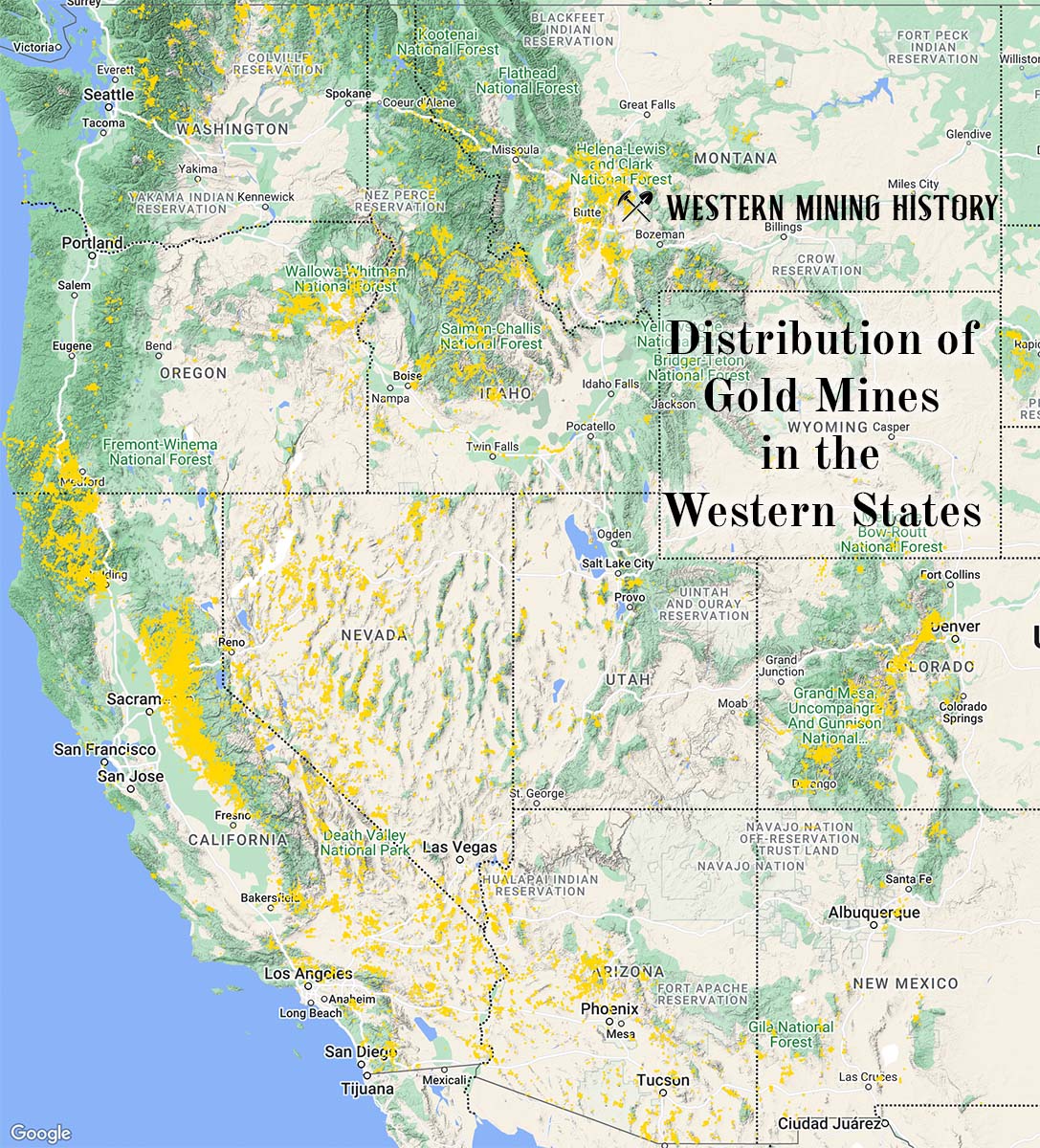The Cliffside Mine is a uranium and vanadium mine located in McKinley county, New Mexico at an elevation of 7,195 feet.
About the MRDS Data:
All mine locations were obtained from the USGS Mineral Resources Data System. The locations and other information in this database have not been verified for accuracy. It should be assumed that all mines are on private property.
Mine Info
Elevation: 7,195 Feet (2,193 Meters)
Commodity: Uranium, Vanadium
Lat, Long: 35.39556, -107.74944
Map: View on Google Maps
Cliffside Mine MRDS details
Site Name
Primary: Cliffside Mine
Secondary: Mine: Phillips
Secondary: Kerr-Mcgee
Secondary: Section 36
Commodity
Primary: Uranium
Primary: Vanadium
Tertiary: Molybdenum
Tertiary: Selenium
Location
State: New Mexico
County: McKinley
District: Grants Uranium District: Ambrosia Lake Subdistrict
Land Status
Land ownership: State
Note: the land ownership field only identifies whether the area the mine is in is generally on public lands like Forest Service or BLM land, or if it is in an area that is generally private property. It does not definitively identify property status, nor does it indicate claim status or whether an area is open to prospecting. Always respect private property.
Holdings
Type: State Lease
Workings
Type: Underground
Ownership
Owner Name: Kerr-Mc Gee Corp.
Home Office: Grants, Nm
Years: 1984 -
Owner Name: Kerr-McGee Nuclear Corp.
Home Office: OK
Info Year: 1979
Owner Name: State Of New Mexico
Home Office: New Mexico
Production
Year: 1960
Time Period: 1960
Material type: ORE U
Description: Cp_Grade: ^0.41 Percent U3o8
Deposit
Record Type: Site
Operation Category: Past Producer
Deposit Type: Stratiform
Operation Type: Underground
Year First Production: 1960
Year Last Production: 1983
Discovery Year: 1957
Discovery Method: Ore-Mineral In Place
Years of Production:
Organization:
Significant: N
Deposit Size: M
Physiography
General Physiographic Area: Intermontane Plateaus
Physiographic Province: Colorado Plateaus
Physiographic Section: Datil Section
Mineral Deposit Model
Not available
Orebody
Form: THE DEPOSIT CONSISTS OF TWO OREBODIES-ONE IS A LARGE IRREGULAR, ROUGHLY CIRCULAR MASS AND THE OTHER A LONG, NARROW POD THAT TRENDS SOUTHEASTWARD. A LARGE, 100-FT CYLINDRICAL COLLAPSE STRUCTURE OCCURS IN THE SOUTHERN EDGE OF THE MAIN OREBODY: ORE IN THE COLLAPSE STRUCTURE IS DISPLACED ABOUT 20 FEET. THE ORE IS GENERALLY THICKER AND HIGHER GRADE THAN IN ADJACENT WALLS BUT SAME STRATIGRAPHIC ZONE
Structure
Type: R
Description: San Mateo Anticline
Type: L
Description: San Mateo Anticline; A 100-Ft, Cylindrical Collapse Structure.
Alterations
Not available
Rocks
Name: Sandstone
Role: Host
Age Type: Host Rock Unit
Age Young: Late Jurassic
Name: Sandstone
Role: Host
Age Type: Host Rock
Age Young: Late Jurassic
Analytical Data
Analytical Data: A 6000-TON SAMPLE ASSAYED: 0.52 PERCENT U308, 0.23 PERCENT V205, 0.012 PERCENT MO, 0.029 PERCENT SE.
Materials
Ore: Coffinite
Ore: Montroseite
Comments
Comment (Location): LOCATION IS ACCURATE FOR THE SHAFT. ; INFO FROM LAND.ST :(1979)
Comment (Production): PRODUCTION TOTALLED 745, 074 TONS OF ORE.
Comment (Workings): WORKINGS CONSIST OF A 1497-FT VERTICAL SHAFT AND MODIFIED ROOM AND PILLAR WORKINGS. THE MINE USES TRACK HAULAGE.
Comment (Geology): THE DEPOSIT OCCURS IN THE WESTWATER CANYON MEMBER OF THE MORRISON FORMATION.
Comment (Deposit): THE CLIFFSIDE MINE IS UNUSUAL IN SEVERAL RESPECTS: THE HIGH AVERAGE URANIUM CONTENT; THE EXTREME HIGH GRADE OF THIN ORE STREAKS; THE EQUIDIMENSIONAL PLAN AND GREAT THICKNESS OF THE CENTRAL CORE; THE SCARCITY OF PYRITE; THE SCARCITY OF BLACK, URANIUM DEFICIENT SANDSTONE; THE OCCURANCE OF SANDSTONE PIPES; AND THE COMMON OCCURENCE OF VERY HIGH-GRADE UNOXIDIZED ORE IN CLOSE ASSOCIATION WITH RED SANDSTONE AND MUDSTONE. (CLARK, D.S. AND S.R. HAVENSTRITE, 1963, NMBMMR MEM 15, P. 116) ; INFO.SRC : 1 PUB LIT; 2 UNPUB REPT
References
Reference (Deposit): NMBMMR GENERAL FILE DATA
Reference (Deposit): MCLEMORE, V.T., 1983, NMBMMR OFR-183, APPENDIX 1
Reference (Deposit): SQUYRES, J.B., 1980, NMBMMR MEM 38, P. 86-96
Reference (Deposit): HILPERT, L.S., 1969, USGS PP 603, P. 39
Reference (Deposit): CLARK, D.S., AND S.R. HAVENSTRITE, 1963, NMBMMR MEM 15, P. 108-116
Reference (Deposit): NMBMMR MINES FILE
Reference (Deposit): NMBMMR MAP FILES
Reference (Deposit): NMSMIR, 1958
Reference (Deposit): NMBMMR GEOLOGIC MAP 31, 1979
Reference (Deposit): NMBMMR RESOURCE MAP 9, 1979
Reference (Deposit): FILE, 1965, NMBM CIRC 77
The Top Ten Gold Producing States

These ten states contributed the most to the gold production that built the West from 1848 through the 1930s. The Top Ten Gold Producing States.